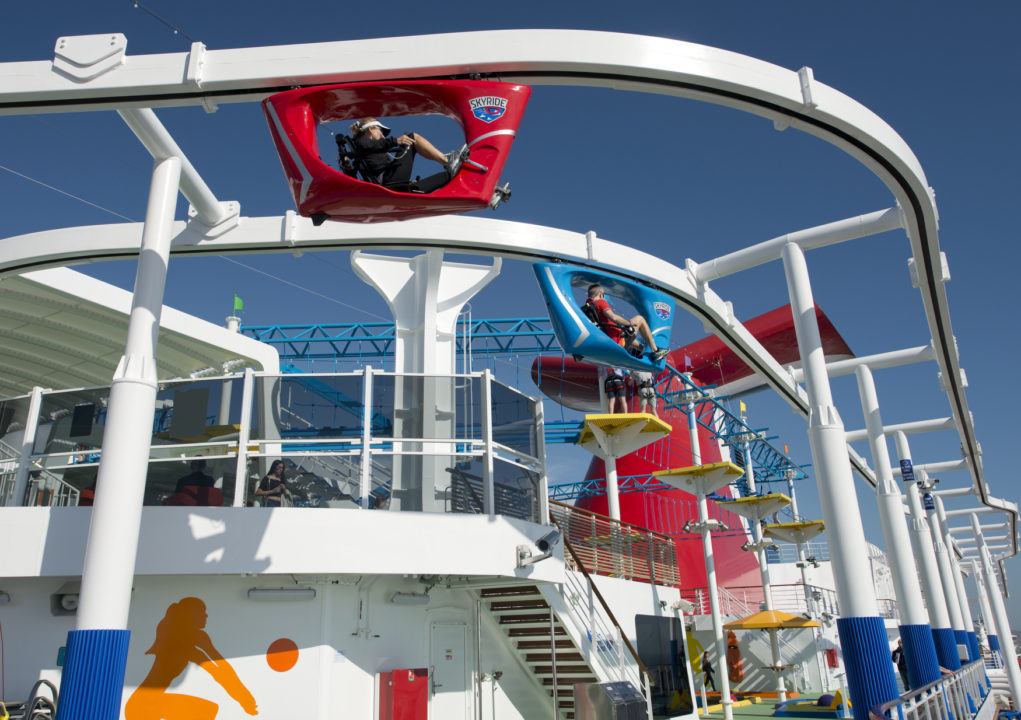After achieving their sustainability goals for 2020 in 2019, a year early, Carnival Corporation and their associated family of brands has set the target higher for 2030 with even more aspirations for 2050. I bet they make both future marks early as well. As if you needed any other reason to like the World’s Most Popular Cruise Line, we have a bunch of them here. Carnival Corporation is breaking that big job into six smaller goals, some new, on their way to achieving nearly pollution-free cruising. Take a look at two of those six areas today.

MIAMI (June 22, 2021) – Carnival Corporation & plc (NYSE/LSE: CCL; NYSE: CUK), the world’s largest cruise company, today announced its initial set of 2030 sustainability goals, as part of the company’s ongoing commitment to sustainability and compliance throughout its global operations.
Following the achievement of its 2020 sustainability goals, Carnival Corporation has established new sustainability goals for 2030 and aspirations for 2050, incorporating six key focus areas that specifically align with some of the United Nations’ Sustainable Development Goals. These areas include: climate action; circular economy (waste reduction); sustainable tourism; health and well-being; diversity, equity and inclusion (DEI); and biodiversity and conservation.
Detailed below, Carnival Corporation is announcing several new goals, targets and aspirations for 2030 and beyond for two of its six focus areas that will guide its actions to further strengthen its environmental, social and governance performance. Carnival Corporation’s sustainability commitments under the climate action and circular economy focus areas include:

Climate Action:
- Achieve a 40% reduction in carbon rate per available lower berth day by 2030, relative to a 2008 baseline.
- Confirmation that the company peaked its absolute carbon emissions in 2011, despite an approximately 20% capacity increase between 2011 and today with an additional 19% capacity increase on order, and a commitment to continue to reduce emissions over time, and identify a pathway to decarbonization.
- Expand its alternative fuels strategy across its liquefied natural gas (LNG) program and battery, fuel cell and biofuel capabilities.
- Deliver a 50% reduction in absolute air emissions of particulate matter by 2030 relative to a 2015 baseline, despite an over 10% capacity increase since 2015 and the additional 19% capacity increase on order.
- Increase fleetwide shore power connection capability to at least 60% of the fleet by 2030.
- Achieve net carbon neutral operations by 2050.

Circular Economy:
- Achieve 50% reduction in single-use plastic items by the end of 2021, relative to a 2018 baseline.
- Achieve 30% per capita food waste reduction by 2022 and 50% by 2030, relative to a 2019 baseline.
- Increase fleetwide coverage of Advanced Waste Water Treatment Systems to at least 75% by 2030.
- Aspire to build zero emissions ships by 2050.
Carnival Corporation will detail additional 2030 sustainability goals and 2050 aspirations covering all six of its focus areas in its 2020 Sustainability Report to be issued later this summer.
“At Carnival Corporation, our highest responsibility and top priorities are always compliance, environmental protection, and the health, safety and well-being of our guests, the people in the communities we touch and serve, and our shipboard and shoreside personnel,” said Arnold Donald, CEO of Carnival Corporation. “The 2030 goals and our aspirations for 2050 are an important next step in our sustainability journey and support our efforts to establish a path to zero emission cruising over time.”
Added Bill Burke, chief maritime officer for Carnival Corporation: “Our new 2030 sustainability goals demonstrate our ongoing commitment to ingraining sustainability in all aspects of our operations across our nine brands, while providing us clear, measurable targets and metrics to improve our performance and overall efficiency across our shoreside and shipboard operations.”
The new set of 2030 sustainability targets and 2050 aspirations build on the momentum of the company’s performance relative to its 2020 sustainability goals, which were achieved and in some cases surpassed in 2019, a full year ahead of schedule. As the company continues to work toward the broad restart of guest cruise operations, it is maintaining its focus on its environmental, social and governance performance, including continued progress on its sustainability efforts through the pause in guest cruise operations.
As part of its strategic plan for carbon footprint reduction, the company leads the cruise industry’s use of LNG to power cruise ships with a total of 11 next-generation cruise ships that will have joined the fleet through 2025, which will represent nearly 20% of its total capacity, including four ships already in operation. The company also pioneered the use of Advanced Air Quality Systems on board its ships and is promoting the use of shore power, enabling ships to use shoreside electric power where available while in port.
In addition, the company has implemented broad initiatives to optimize onboard energy use, and innovative hull designs and coatings to reduce fuel consumption by minimizing frictional drag, along with trialing innovative technologies for generating power on cruise ships, including battery power and fuel cells.
These efforts, along with a series of others underway, support and strengthen Carnival Corporation’s long-term commitment to sustainability, responsible operations and protecting the environment, as outlined in its 2030 sustainability goals and 2050 aspirations. Additional information on Carnival Corporation’s sustainability efforts is available at www.carnivalsustainability.com.
